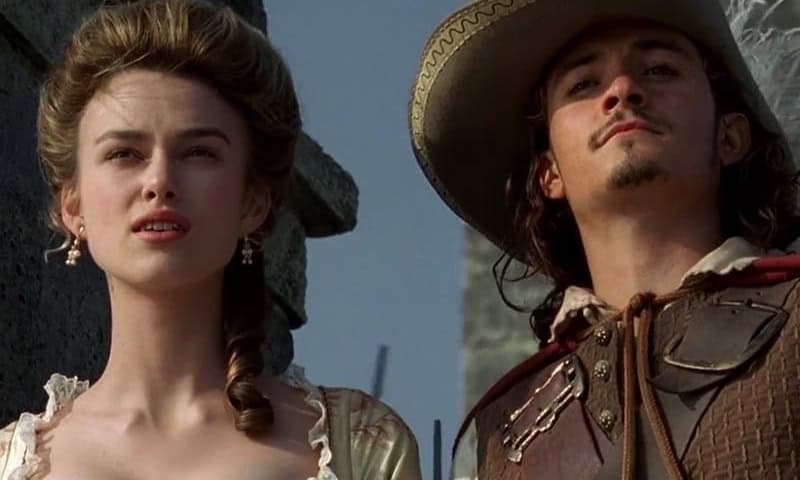What Makes ‘Pirates of the Caribbean: The Curse of the Black Pearl’ a Classic Adventure Film
Say what you will about the rest of the franchise, but the original is an exemplary film for its genre.

Welcome to The Queue — your daily distraction of curated video content sourced from across the web. Today, we’re watching a video that champions the first Pirates of the Caribbean movie as a classic adventure movie.
We just don’t see much of the adventure genre these days. For whatever reason, swashbuckling and the 21st century aren’t on the best terms. There are spy thrillers aplenty. You can hardly throw a rock without hitting eighteen different superhero films. But historical action romps? In this economy? I think not!
That said, there is one very big exception: Disney’s 2003 blockbuster Pirates of the Caribbean: The Curse of the Black Pearl. Its success, not just as a classic adventure film but as one based on a theme park attraction, is nothing short of a miracle. Lest we forget: Disney’s track record for adapting rides was not great at the time (the previous year saw the release of The Country Bears, an astonishing piece of nightmare fuel whose creation probably opened a portal to hell). Plus, cinematic pirates hadn’t had a critical hit since Muppet Treasure Island in 1996.
That first Pirates of the Caribbean film’s confidence in its genre is remarkable. It’s a true-blue classic historical adventure film with a narrative structure so tight you can bounce a penny off it. The film (which spawned four sequels and maybe another on the way) doesn’t just paste a modern outlook onto the conventions of an atrophying genre. Rather, it genuinely integrates the fundamental building blocks of an adventure film into its script.
Rather than merely going through the motions, The Curse of the Black Pearl whole-heartedly embraces its genre requirements. As the video essay below explains, there are (at least) four key elements that define an adventure film: first, a historical setting; second, travel to unknown lands; third, quests for magical objects, and finally, danger. The film’s screenplay (by Ted Elliott and Terry Rossio, from a story by Elliott, Rossio, Stuart Beattie, and Jay Wolpert) earnestly engrains each of these elements into its narrative, and the result is a film with adventure in its bones. Plus, thanks to its solid foundations, the film is able to integrate a tonal remix close to the adventure genre’s heart: horror.
Watch “The Rules (Guidelines) of Adventure — The Pirates of the Caribbean“:
Who made this?
This genre breakdown comes courtesy of Lessons From The Screenplay, which is a consistently insightful video essay channel created and run by Michael Tucker. Lessons From The Screenplay focuses on analyzing movie scripts to determine exactly how films tell effective stories. You can check out Lessons From The Screenplay’s YouTube channel here. And you can follow Tucker on Twitter here.
More Videos Like This
- Another taste of Lessons From the Screenplay: how Whiplash and Black Swan offer two different takes on the “obsessed artist”
- The first installment of Pirates of the Caribbean is one of the best action-adventure films ever made. And it was a total accident. Here’s a nearly feature-length investigation on why the film’s success is a miracle
- Here’s Josh Keefe with an argument for why 1999’s The Mummy perfectly captures the spirit of the genre ultimately making it an adventure masterpiece
- The Curse of the Black Pearl rips. But, as Captain Midnight lays out: the franchise has been dying a slow death
- Raiders of the Lost Ark is up there as one of the best adventure films of all time. Here’s CineFix with a breakdown of the famous boulder scene
